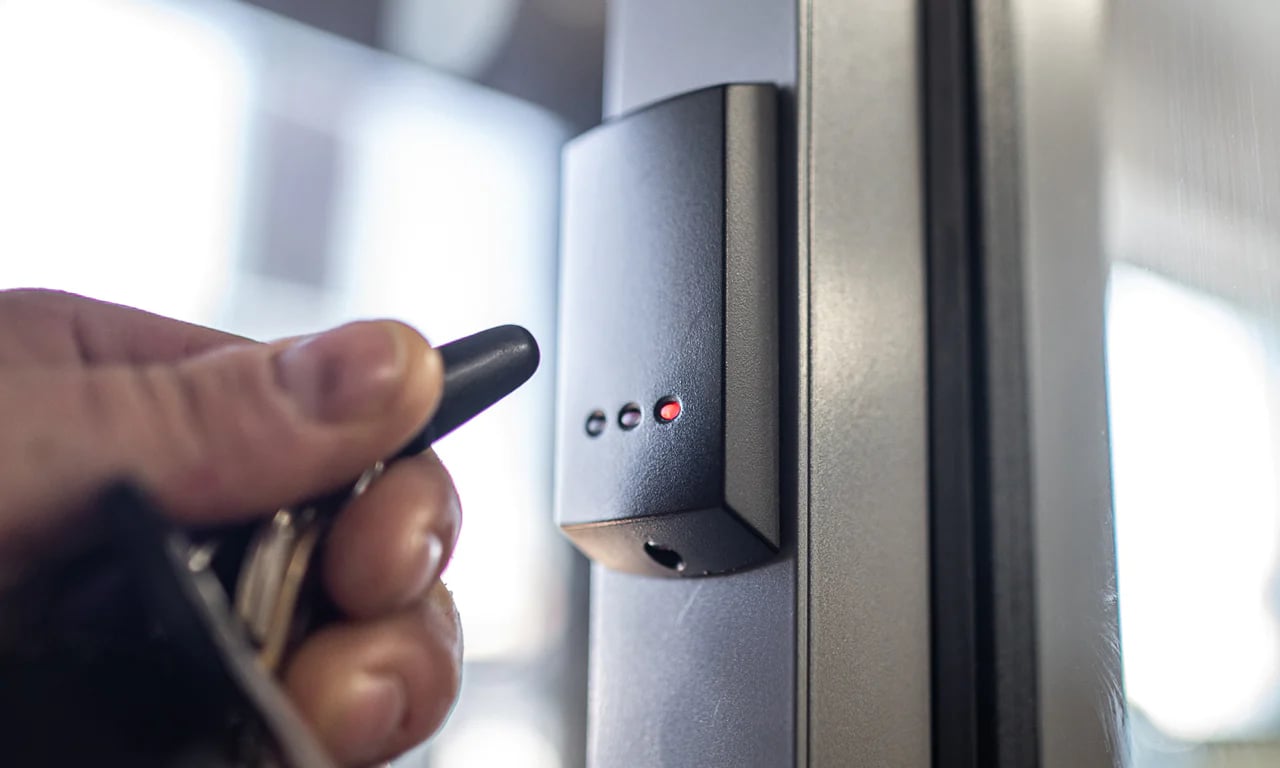
Access Control
Providing you with total peace of mind.
Access control systems supplied and installed by Altegra
Our access control systems offer secure, convenient, flexible and cost-effective way of controlling who has access to your building and when that access is allowed. Installing an access control system means that you will never have to change a lock again.
- Single door to multi-door systems
- Standalone and PC based systems
- Pin, fob, card and biometric readers
- Event reporting
- Clocking in/out systems linked directly into access control units
- Door entry intercoms
- Service packages
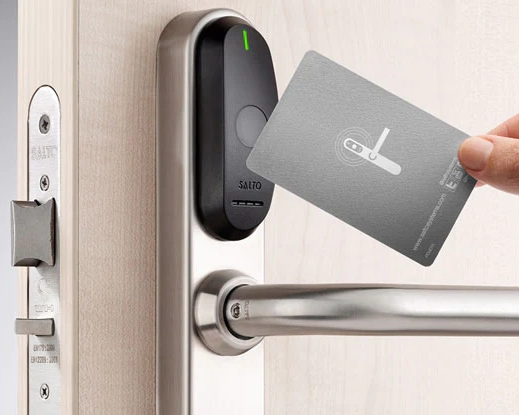
Access Control Types
Our products aim to enhance security, streamline access control, and provide a seamless user experience. We offer
- Identity Verification: Facial recognition technology can be used for identity verification during the account creation or login process on a website. Users can capture their face using a webcam or upload a photo, and the system compares it to the stored template to verify their identity.
-
Access Control: Facial recognition can be integrated into access control systems for websites, allowing authorized individuals to gain entry or access certain areas. Users can authenticate themselves by presenting their face to a camera, which is then compared to the authorized faces in the system.
-
Secure Transactions: Facial recognition technology can be used to enhance the security of online transactions. By verifying the user's identity through facial recognition, websites can prevent unauthorized access to sensitive information or fraudulent transactions.
-
Visitor Management: Websites that require visitor registration or check-in can utilize facial recognition for streamlined and secure visitor management. Visitors can register their face upon arrival, and the system can quickly verify their identity, print visitor badges, or grant access to designated areas.
-
Surveillance and Monitoring: Facial recognition technology can be integrated into website security systems to monitor and identify individuals in real-time. This can be useful for detecting and preventing unauthorized access or suspicious activities.
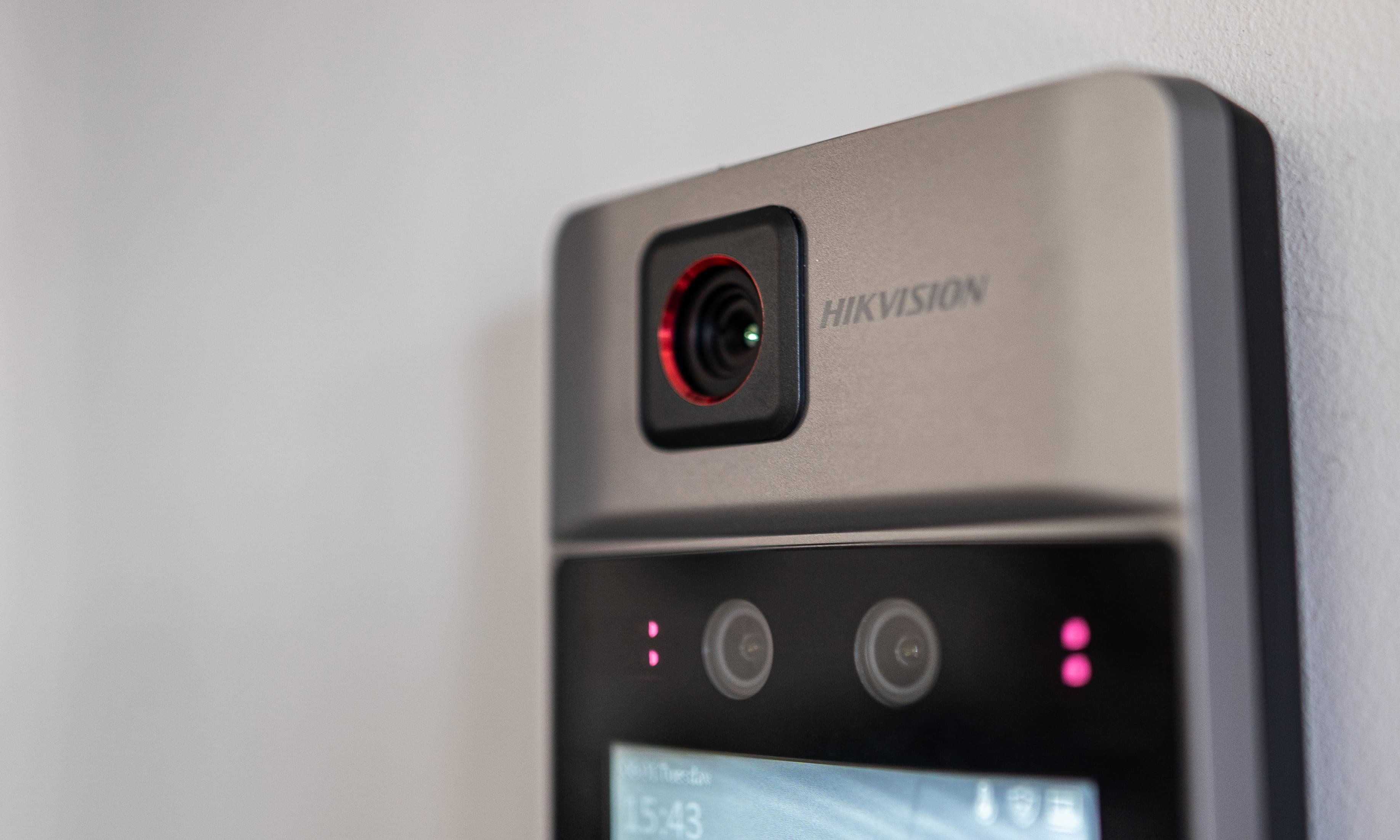
Proximity and motion-based access and security products can enhance security and control access. At Altegra we can help you with:
-
Proximity Cards or Key Fobs: Proximity cards or key fobs use radio frequency identification (RFID) technology to grant access to authorized individuals. Users can present their card or key fob to a reader device to gain entry.
-
Motion Sensors: Motion sensors can be installed to detect movement or the presence of individuals in specific areas. These sensors can trigger actions such as activating cameras, sounding alarms, or restricting access to certain parts of a website.
-
Smartphone-Based Access Control: Many access control systems offer smartphone-based solutions that utilize Bluetooth Low Energy (BLE) or Near Field Communication (NFC) technology. Users can download a mobile app and use their smartphone as a credential for access.
-
Biometric Authentication: Biometric authentication methods, such as fingerprint or iris scanners, can authenticate themselves using their unique biometric traits, which are compared against stored templates for verification.
-
Visitor Management Systems: Websites can incorporate visitor management systems that allow visitors to sign in or register their details upon arrival. These systems can include features such as visitor badges, registration forms, and real-time notifications to hosts.
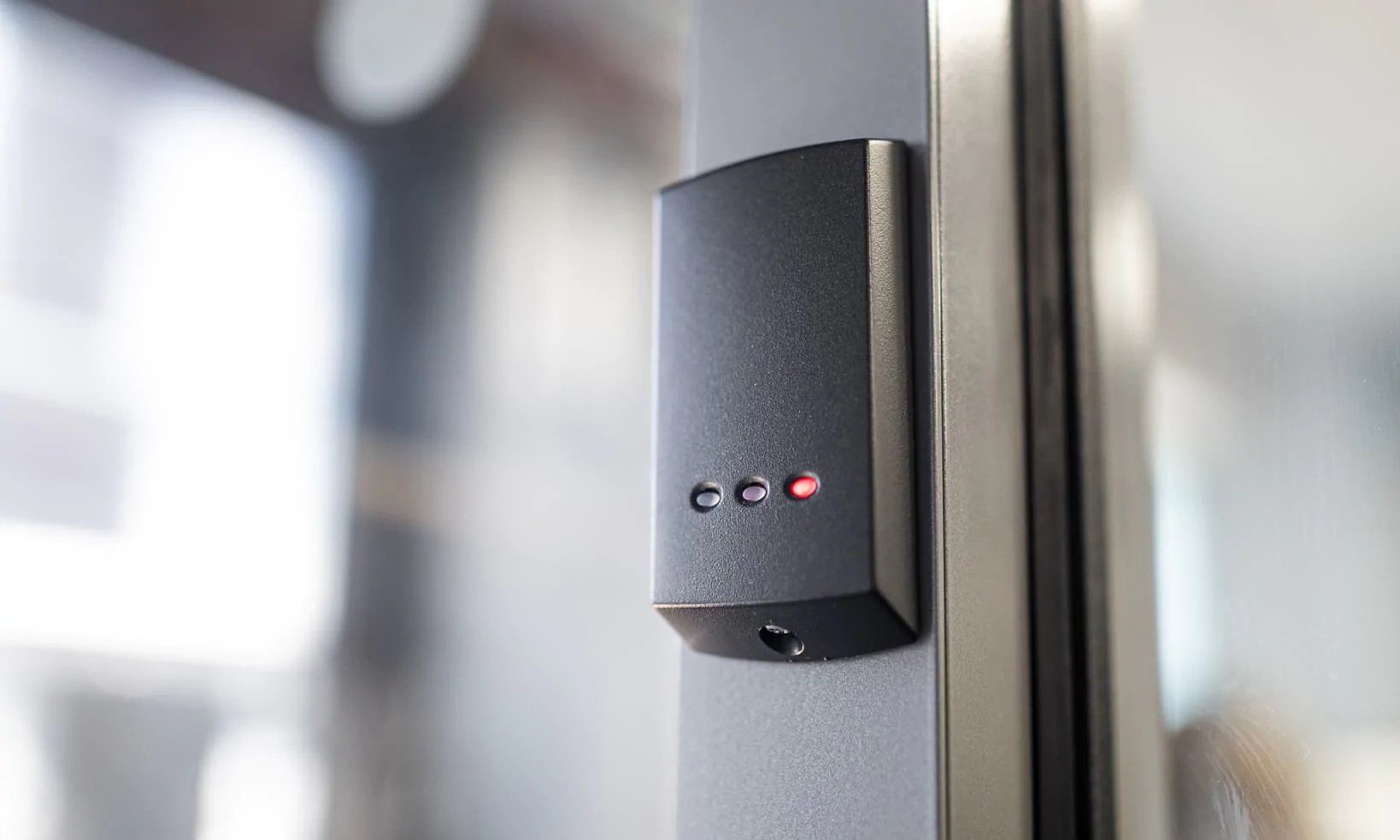
A keypad control system is a security mechanism that utilizes a physical or virtual keypad to grant or restrict access to a specific area or resource. It typically involves the input of a predefined code or PIN to authenticate and authorize users. Keypad control systems are utilized in various contexts, including residential and commercial security systems, building access control, electronic locks, and secure areas requiring restricted access.
Key functionality:
-
Authentication: The keypad control system requires users to input a valid code or PIN to verify their identity and gain access. The code can be a combination of numbers, letters, or a combination of both.
-
Access Control: Once the correct code or PIN is entered, the keypad control system grants access to the desired area or resource. It ensures that only authorized individuals with the correct code can gain entry.
-
Customizable Codes: The system allows administrators to set up and manage different codes or PINs for authorized users. Each user may have a unique code associated with their identity or access level, providing granular control over who can access specific areas.
-
Security Features: Keypad control systems often incorporate security measures to protect against unauthorized access attempts. These measures can include features like anti-tamper mechanisms, timeout periods between incorrect attempts, and encryption of transmitted data.
-
Audit Trail: Some keypad control systems maintain an audit trail of access attempts and successful entries. This log can be useful for monitoring access activity, investigating security incidents, or tracking user behaviour.
-
Temporary Access: In certain scenarios, keypad control systems may support the creation of temporary codes or PINs. These temporary access credentials can be issued for specific timeframes, enabling temporary users or visitors to gain entry without compromising long-term security.
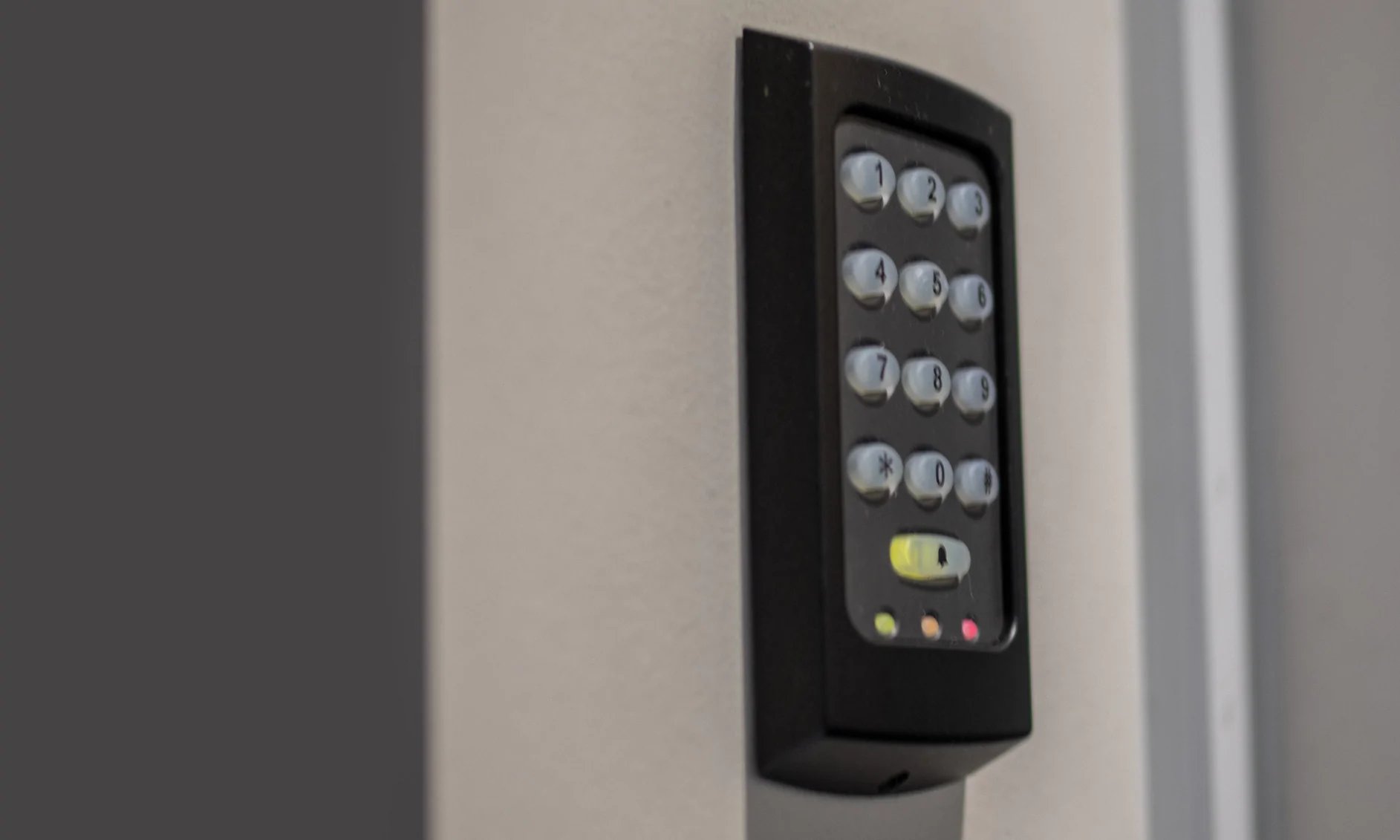
An intercom access system is a great security solution that combines an audio or video intercom with an access control system to manage entry to a building or specific areas within a building. It allows communication and verification of individuals seeking access before granting entry.
Functionality:
-
Communication: The intercom access system enables two-way communication between a visitor and an authorized person inside the building. It allows the visitor to communicate their intent or request entry, while the authorized person can verify the visitor's identity and decide whether to grant access.
-
Verification: The system provides a means to verify the identity of visitors before allowing entry. This can include asking for identification, confirming appointments, or using other authentication methods such as codes, PINs, or biometric data.
-
Access Control Integration: The intercom system is integrated with an access control system, enabling the authorized person to remotely unlock doors or gates to grant access to approved visitors. This integration ensures that access is only granted after proper verification.
-
Audio and Video Capabilities: Intercom access systems can include audio-only or audio-video communication features. Video intercoms provide visual verification, allowing the authorized person to see the visitor before deciding to grant access.
-
Remote Management: Intercom access systems can be managed remotely. Authorized personnel can remotely communicate with visitors and grant or deny access through a centralized control panel or mobile application.
-
Record Keeping: Intercom access systems may have the ability to record audio or video conversations for future reference or security purposes. This can be useful for reviewing access events, investigating incidents, or maintaining a record of visitor interactions.
Applications:
Our intercom access systems are commonly used in various settings, including:
- Residential buildings: Apartment complexes, gated communities, or single-family homes.
- Commercial buildings: Office buildings, business premises, or industrial facilities.
- Educational institutions: Schools, universities, or campuses.
- Healthcare facilities: Hospitals, clinics, or nursing homes.
- Secure facilities: Government buildings, data centres, or research facilities.
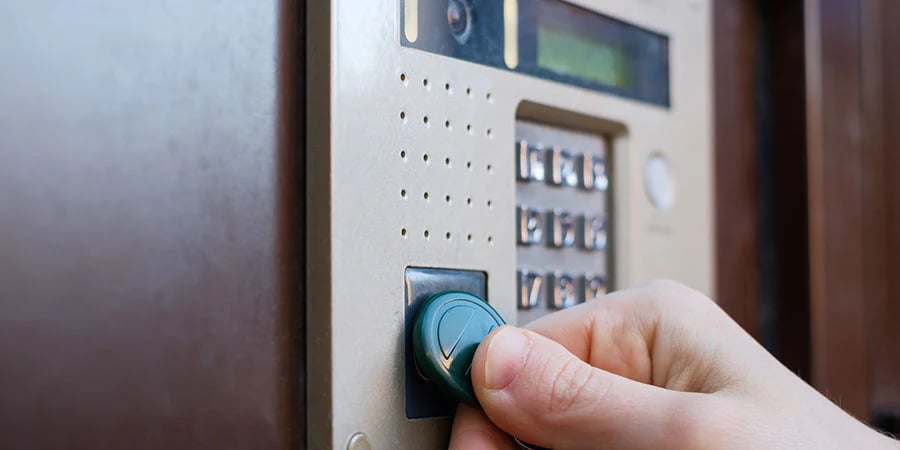
DigiLocks offers a range of access and security solutions, including electronic locks, with various features designed to enhance security and convenience. While specific features may vary depending on the model and type of lock, here are some common features found in our DigiLocks products:
-
Keyless Entry: DigiLocks' electronic locks provide keyless entry options, eliminating the need for traditional keys. Users can access secured areas using alternative methods such as PIN codes, keycards, or biometric authentication.
-
Multiple Access Modes: DigiLocks may support multiple access modes, allowing users to choose the most suitable method for entry. This can include PIN code entry, keycard scanning, or biometric verification (fingerprint, facial recognition).
-
Remote Access Control: Some DigiLocks products offer remote access control capabilities, allowing authorized users to manage and control locks from a centralized location. This can be done through a mobile app or web-based interface, providing convenient access management.
-
Audit Trail: Many DigiLocks feature an audit trail functionality that records and stores access events, including details such as date, time, and user identification. This feature enables administrators to track and review access history for security and monitoring purposes.
-
Battery Backup: To ensure continuous operation even during power outages, DigiLocks may include battery backup systems. This ensures that locks remain functional and accessible during unexpected power disruptions.
-
Integration with Access Control Systems: DigiLocks products can integrate with broader access control systems, allowing seamless coordination with other security devices and access management platforms. This integration enhances the overall security infrastructure and enables centralized control.
-
Tamper Detection and Alarm: Some DigiLocks feature tamper detection mechanisms that can trigger alarms or alerts in the event of unauthorized tampering or forced entry attempts. This helps deter intruders and provides additional security layers.
-
Durability and Weather Resistance: DigiLocks are often built with durable and weather-resistant materials, making them suitable for indoor and outdoor installations. They are designed to withstand various environmental conditions and ensure long-lasting performance.

Our keyfobs are small devices that provide wireless access control and typically function as a portable credential for granting entry to secured areas. While specific features may vary depending on the manufacturer and model, here are some common features found in keyfobs:
-
Convenience: Keyfobs offer a convenient way to access secured areas without the need for traditional keys or manual input of codes. They are small, portable, and can easily be carried on a keychain or in a pocket.
-
Contactless Technology: Keyfobs often utilize contactless technology, such as radio frequency identification (RFID) or near-field communication (NFC), for communication with the access control system. This allows for quick and seamless authentication.
-
Secure Credential Storage: Keyfobs securely store unique identification data, such as a unique identifier or encrypted code, which is used for authentication. This data is usually embedded in the keyfob's memory or microchip.
-
Multiple Access Levels: Depending on the access control system, keyfobs can support multiple access levels or permissions. This allows for different levels of access based on the user's credentials, enabling selective access to different areas or resources.
-
Ease of Integration: Keyfobs are designed to seamlessly integrate with various access control systems, including card readers, proximity readers, or other compatible devices. They can be easily programmed or registered to work with the specific access control system.
-
Durability: Keyfobs are typically designed to withstand daily use and are built with durable materials that can withstand normal wear and tear. This ensures their longevity and reliability in various environments.
-
Visual Identification: Keyfobs may feature visual identification elements, such as colour coding or printed logos, to easily differentiate between different user groups or access levels. This helps users identify the appropriate keyfob for their access permissions.
-
Battery-Free Options: Some keyfobs utilize passive RFID technology, which does not require an internal battery. These keyfobs draw power from the card reader or access control system when they are in proximity, eliminating the need for battery replacement or recharging.
